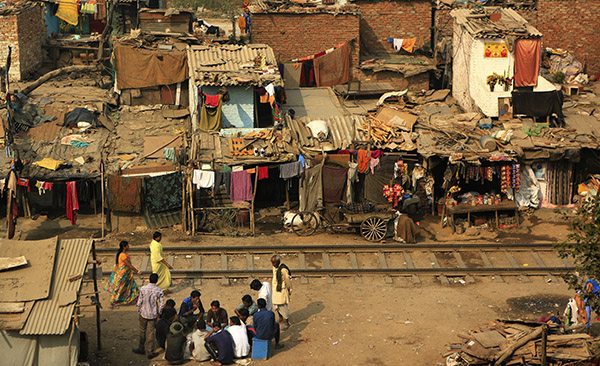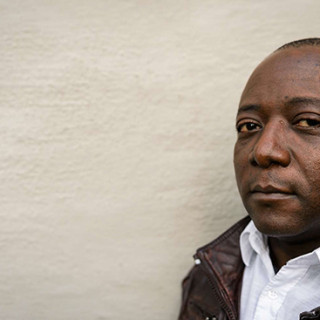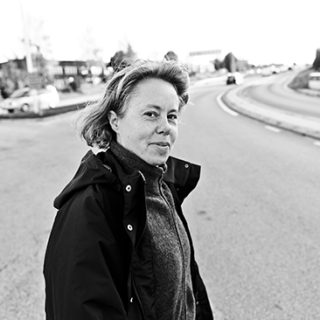Informal and marginalised areas can no longer be ignored
Due to rapid urbanisation, the slum population in India is expected to increase to 104 million by 2017, around 10 percent of the projected population. The term ”slums” refers to settlements unfit for human habitation, which often develop in areas prone to hazards such as floods and landslides. At the same time, their location, together with overcrowding and socio-economic issues such as illegal electricity connections, can lead to increased risk of fire and overheating.
‟There is a growing realisation amongst government officials and planners in India that the complex challenges of slums can no longer be ignored, and that increased capacity for addressing these challenges is needed. It is very difficult to move people once they have settled, and slums keep on expanding rapidly”, says Christine Wamsler, Professor at the Lund University Centre for Sustainability Studies, LUCSUS. The government of India has addressed this situation by defining “Housing for All” by 2022 as its goal. This creates a huge demand for future architects and urban planners.
Christine Wamsler is involved in the EU-financed project Building Inclusive Urban Communities, BInUCom, which responds to this demand. The project aims to increase the capacity of future architects and planners to address the complex challenges that slums represent in terms of sustainable planning, housing and poverty reduction, while taking into account environmental risks, societal needs and economic inequalities.
One aspect of the project is to deal with social and cultural barriers relating to working in slums and interacting with slum dwellers. Many of the future architects and planners come from the middle or upper classes and castes, have never been in a slum, or are little familiar with the residents’ daily struggles. This can make teaching and training especially challenging. In the BInUCom project, local planners and architects thus jointly conduct case studies in different slum areas, engage with the local communities, and the knowledge gained is then used for new course and curriculum development at under- and post-graduate levels.
‟Our approach is to encourage joint solutions, involving both local professionals and residents. We see it as essential for the students to develop local knowledge and planning approaches in close collaboration with the slum dwellers”, says Christine Wamsler.
‟Future planners and architects need to become better equipped and trained.”
This way of working can take many different forms. For example, professionals and students can get firsthand knowledge of how various environmental risks such as floods, landslides, heat and fire can impact people’s everyday life. They can also collate data of settlement trends and conduct interviews with slum dwellers – to chart both needs and ideas on how to create more sustainable solutions.
Christine Wamsler adds that other aspects central to understanding slums are also addressed. These include global trends such as climate change, the ways in which power emerges and consolidates, and the causes and consequences of the unequal distribution of risk.
In this context, another key aspect of the project is cooperation between professionals to support capacity development and, thus, to complement the vertical policy-making in India with a horizontal exchange of good practices. The BInUCom project fosters collaboration between four Indian and three European higher education institutions. The role of LUCSUS and Christine Wamsler is to bring expertise and experience related to inclusive disaster risk reduction and climate change adaptation. It includes the support for developing various workshops, case studies and new courses on these issues.
According to Christine Wamsler, creating awareness that risks and their underlying root causes need to be addressed comprehensively is central in this context. She says that exploring how planning initiatives can be both the cause of increasing risk and, at the same time, an approach to sustainably reducing risk is crucial.
‟Together, we are looking into different possibilities for mitigating the causes and impacts of floods, landslides and heatwaves. But not only on-the-ground measures are discussed with the different project stakeholders. We also look into existing approaches to integrate risk reduction and climate change adaptation at institutional level, for instance in working procedures, tools and planning regulations of urban institutions and city authorities.”
The overall ambition of the project is to support the development of more inclusive communities by challenging current teaching approaches and assisting new course and curriculum development that takes account of societal needs and complex challenges, such as increasing disasters and climate change.
‟For that to happen, the first step is to include informal areas and inclusive planning approaches in the formal education system, so that future planners and architects will become better equipped and trained to drive and create more sustainable change”, she says.
Text: Noomi Egan
Facts
-
Links BInUCom








